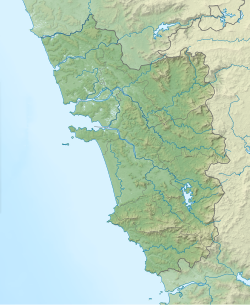| Safa Mosque | |
|---|---|
 The mosque in 2012 | |
| Religion | |
| Affiliation | Islam |
| Ecclesiastical or organizational status | Mosque |
| Status | Active |
| Location | |
| Location | Ponda, Goa |
| Country | India |
Location of the mosque in Goa | |
| Geographic coordinates | 15°24′N74°01′E / 15.40°N 74.02°E |
| Architecture | |
| Type | Mosque architecture |
| Style | Islamic |
| Completed | c. 1560 |
| Official name | Safa Mosque, Goa |
| Reference no. | N-GA-18 |
The Safa Mosque, also known as the Safa Shahouri Mosque, is a mosque located at Ponda within Goa, India. [1] The mosque has a complex consisting of garden and fountains. The terracotta tile roof accommodates a rectangular prayer hall. [2] Completed in the 16th century, the mosque is an ASI-protected Monument of National Importance in Goa. [3]

